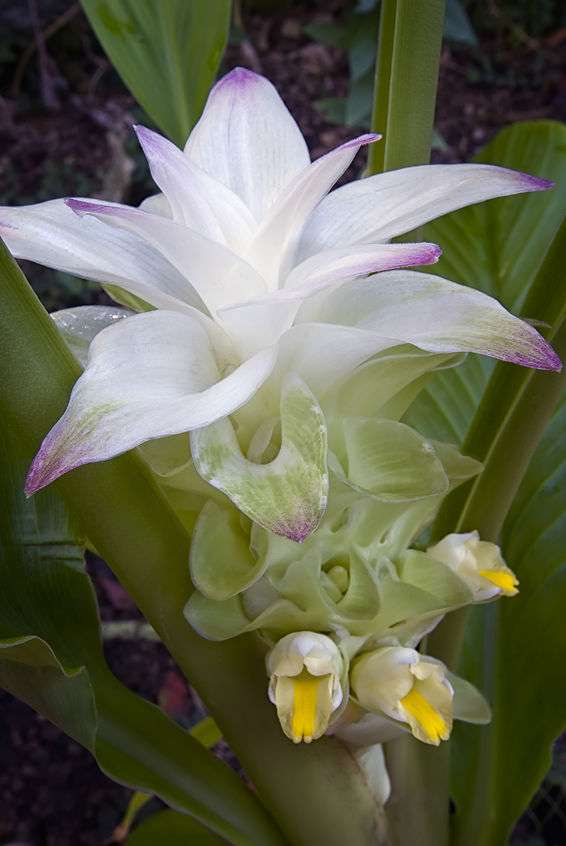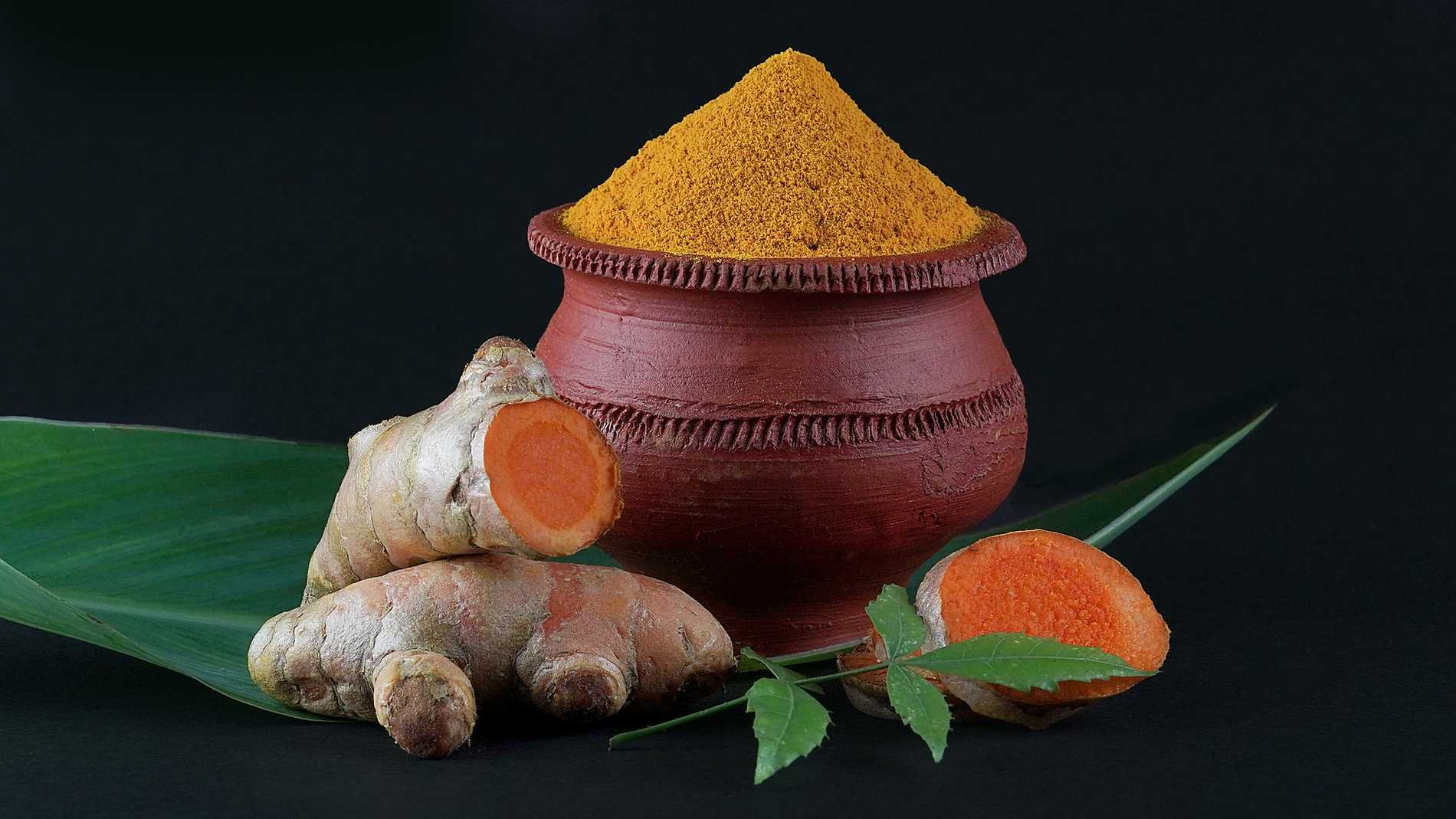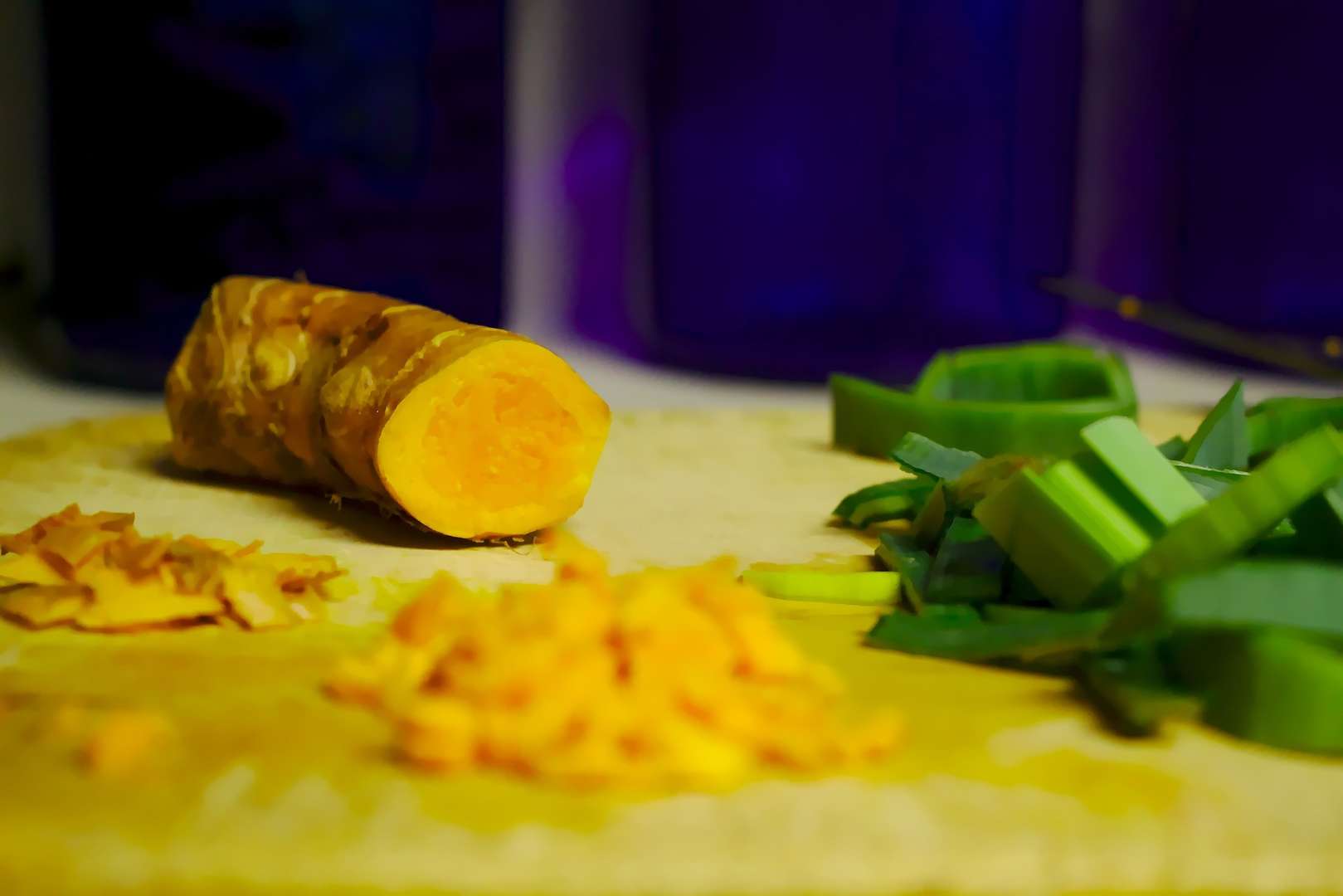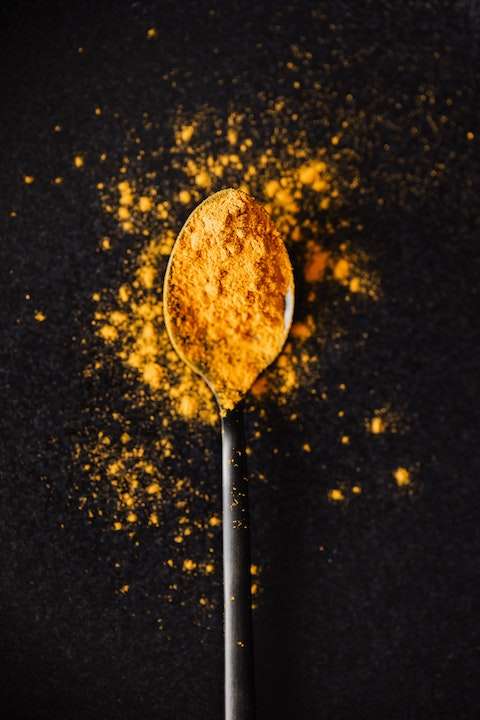
You might not know the name but you probably know the flavor if you like curry.
What we call turmeric is actually the dried and ground rhizome (root) of a plant in the same family as ginger (zingiberaceae). It has been used extensively in natural and folk medicine for centuries. It’s also used for its color and flavor in international cuisine.

Turmeric Root - The Spice of Life!
Turmeric root is where we get both turmeric powder and curcumin. It’s often called ‘The Golden Spice’ or ‘The Spice of Life,’ as it is considered to be one of the most powerful herbs. Turmeric is cultivated in India (the largest producer, consumer and exporter of turmeric), followed by Bangladesh, China, Thailand, and other Southeast Asian countries. In English, turmeric was called Indian saffron. Sanskrit has over 55 names for turmeric herb.
Beautiful turmeric flowers.
Turmeric flowers refer to the blooms of the Turmeric plant. The funnel-shaped flowers are white, yellow or pink. They bloom between pale green, leafy bracts, or modified leaves, of the plant. The entire floral structure is conical in shape, and is around 12 centimeters in length. Both the flowers and vegetative bracts are edible, and have a pungent fragrance. They have a delicate texture and taste, not unlike butter lettuce. They have faint notes of the piquant spiciness that one associates with the Turmeric root. (1)
Yellow turmeric (Curcuma longa) roots have a rough, pale brown skin. On the inside, they’re bright orange or yellow. The rhizomes can be used while they are fresh or they can be boiled, then dried in hot ovens in order to be ground into the deep-orange-yellow powder commonly used for color and flavor in many Asian cuisines as well as for dyeing. Turmeric powder has a warm, bitter, black pepper-like flavor. The fragrance is sweet and pleasant, reminding people of a mix of orange-zest, and ginger to which it is related.

The most powerful herb on the planet?
Because it has been used in folk medicine for centuries, many people believe that turmeric may be the most powerful herb on the planet at fighting and potentially reversing disease.
A number of the top trending foods over the last two years are "healthy" ingredients like turmeric, apple cider vinegar, avocado oil, bitter melon, and kefir (high in trendy bacteria called probiotics). They are said to infer benefits like better skin, libido, and energy or cures for depression, insomnia, and pain (in fact, "benefits" is a term that's commonly searched for along with many of these foods). Now, the focus of people's diets is less about eliminating foods than about adding them.
While the concept of functional foods has been around for decades, interest in these specific foods is growing faster than before. Turmeric, a spice that's purported to cure everything from cancer to depression, is the breakout star, with searches growing 300% over the last five years.” (2)

Turmeric is a busy herb!
There are several chemical compounds found in turmeric, known as curcuminoids. These curcuminoids have shown antioxidant, anti-mutagenic, anti-genotoxic, and anti-inflammatory activity. The active substance in turmeric is curcumin, which makes up 3% of the total content of turmeric.
Turmeric is considered to be able to help keep your liver healthy, help stop the oxidization of cholesterol in your body, provide joint/injury support, and provide support to your immune health.
Curcumin has a molecular structure similar to the plant pigments “resveratrol” found in grape seeds/skins and “catechins” found in green tea, etc. Plant polyphenols share natural anti-oxidant and anti-inflammatory properties–just another reason fruits and vegetables are so essential for great health.
Turmeric contains minerals like calcium, potassium, phosphorous, sodium, iron, vitamins B and C, and manganese. It's also an excellent source of fiber, potassium, and magnesium.
Turmeric may be used as a treatment for the following health benefits:
• Sprains
• Swelling
• Osteoarthritis
• Bronchitis
• Hay fever
• Depression
• High cholesterol
• Itching (pruritus)
• Skin inflammation
• Stomach disorders
• Fatigue
Try the "Golden Spice!"
If you'd like to check out some products that contain turmeric root, please visit these links:
EZ/Flex by Dynamic Nutritional Associates (DNA Labs)
Inf-X by Professional Botanicals
Inf-D by Professional Botanicals

_______________________________________________________________________________________________
Note: The content of this article, and additional content on this website, are for informational purposes only and are not intended to be a substitute for professional medical advice, diagnosis, or treatment. Always seek the advice of a physician or other qualified health provider with any questions you may have regarding a medical condition. Never disregard professional medical advice or delay in seeking help because of something you read here on this website.



